In Favor of the Sensitive Man and Other Essays (Original Harvest Book; Hb333) Read online
Table of Contents
Title Page
Table of Contents
Copyright
WOMEN AND MEN
Eroticism in Women
The New Woman
Anaïs Nin Talks About Being a Woman: An Interview
Notes on Feminism
My Sister, My Spouse
Between Me and Life
Women and Children of Japan
In Favor of the Sensitive Man
WRITING, MUSIC, AND FILMS
On Truth and Reality
The Story of My Printing Press
Novelist on Stage
Out of the Labyrinth: An Interview
The Suicide Academy
Miss Macintosh, My Darling
Angel in the Forest
Edgar Varèse
At a Journal Workshop
Henry Jaglom: Magician of the Film
Un Chant d’Amour
Ingmar Bergman
ENCHANTED PLACES
The Labyrinthine City of Fez
Morocco
The Spirit of Bali
Port Vila, New Hebrides
The Swallows Never Leave Noumea
My Turkish Grandmother
About the Author
Copyright© 1976, 1975, 1974, 1973, 1972, 1971, 1966 by Anaïs Nin
Copyright renewed 1994 by Rupert Pole
All rights reserved. No part of this publication may be reproduced or transmitted in any form or by any means, electronic or mechanical, including photocopy, recording, or any information storage and retrieval system, without permission in writing from the publisher.
“My Sister, My Spouse” is from the Norton Library Edition of My Sister, My Spouse: A Biography of Lou Andreas-Salomé, by H. F Peters, and is reprinted with permission of W. W Norton & Company, Inc. The author also wishes to thank the following copyright holders for permission to reprint these essays: The New York Times Company for “Between Me and Life,” © 1974 by The New York Times Company, and “Novelist on Stage,” © 1966 by The New York Times Company; The Village Voice, Inc. for “The Suicide Academy,” copyright © The Village Voice, Inc., 1968, and “The Spirit of Bali,” copyright ©The Village Voice, Inc., 1975.
For information about permission to reproduce selections from this book, write to Permissions, Houghton Mifflin Harcourt Publishing Company, 215 Park Avenue South, New York, New York 10003.
www.hmhco.com
The Library of Congress has cataloged the print edition as follows:
Nin, Anaïs, 1903–1977
In favor of the sensitive man and other essays.
(An Original Harvest book)
I. Title.
PS3527.I865I5 814'. 5'2 75-38583
ISBN 0-15-644445-3
ISBN 978-0-1564-4445-3
eISBN 978-0-544-14868-0
v2.0514
WOMEN AND MEN
Eroticism in Women
From Playgirl, April 1974.
From my personal observation, I would say that woman has not made the separation between love and sensuality which man has made. The two are usually combined in woman; she needs either to love the man she gives herself to or to be loved by him. After lovemaking, she seems to need the assurance that it is love and that the act of sexual possession is part of an exchange which is dictated by love. Men complain that women demand reassurance or expressions of love. The Japanese recognized this need, and in ancient times it was an absolute rule that after a night of lovemaking, the man had to produce a poem and have it delivered to his love before she awakened. What was this but the linking of lovemaking to love?
I believe women still mind a precipitated departure, a lack of acknowledgement of the ritual which has taken place; they still need the words, the telephone call, the letter, the gestures which make the sensual act a particular one, not anonymous and purely sexual.
This may or may not disappear in modern woman, intent on denying all of her past selves, and she may achieve this separation of sex and love which, to my belief, diminishes pleasure and reduces the heightened quality of lovemaking. For lovemaking is enhanced, heightened, intensified by its emotional content. You might compare the difference to a solo player and the vast reaches of an orchestra.
We are all engaged in the task of peeling off the false selves, the programmed selves, the selves created by our families, our culture, our religions. It is an enormous task because the history of women has been as incompletely told as the history of the blacks. Facts have been obscured. Some cultures such as the Indian, Cambodian, Chinese, and Japanese have made their sensual life very accessible and familiar through their male artists. But many times, when women have wanted to reveal the facets of their sensuality, they have been suppressed. Not in as obvious a way as the burning of D. H. Lawrence’s works, or the banning of Henry Miller or James Joyce, but in one long, continuous disparagement by the critics. Many women resorted to using men’s names for their work to bypass prejudice. Only a few years ago, Violette Leduc wrote the most explicit, eloquent, moving descriptions of love between women. She was introduced to her public by Simone de Beauvoir. Yet every review I read was a moral judgment upon her openness. There was no moral judgment passed upon the behavior of Henry Miller’s characters, merely an objection to language. In the case of Violette Leduc it was upon the character herself.
Violette Leduc in La Bâtarde is utterly free:
Isabelle pulled me backwards, she laid me down on the eiderdown, she raised me up, she kept me in her arms: she was taking me out of a world where I had never lived so that she could launch me into a world I had not yet reached; the lips opened mine a little, they moistened my teeth. The too fleshy tongue frightened me; but the strange virility didn’t force its way in. Absently, calmly, I waited. The lips roved over my lips. My heart was beating too hard and I wanted to prolong the sweetness of the imprint, the new experience brushing at my lips. Isabelle is kissing me, I said to myself. She was tracing a circle around my mouth, she was encircling the disturbance, she laid a cool kiss in each corner, two staccato notes of music on my lips; then her mouth pressed against mine once more, hibernating there. . . . We were still hugging each other, we both wanted to be swallowed up by the other. . . . As Isabelle lay crushed over my gaping heart I wanted to feel her enter it. She taught me to open into flower. . . . Her tongue, her little flame, softened my muscles, my flesh. . . . A flower opened in every pore of my skin. . . .
We have to shed self-consciousness. Women will have to shed their imitation of Henry Miller. It is all very well to treat sensuality with humor, with caricature, with bawdiness, but that is another way of relegating it to the casual, unimportant areas of experience.
Women have been discouraged from revealing their sensual nature. When I wrote Spy in the House of Love in 1954, serious critics called Sabina a nymphomaniac. The story of Sabina is that in ten years of married life, she had known two lovers and one platonic friendship with a homosexual. It was the first study of a woman who tries to separate love from sensuality as man does, to seek sensual freedom. It was termed pornographic at the time. One of the “pornographic” passages:
They fled from the eyes of the world, the singer’s prophetic, harsh, ovarian prologues. Down the rusty bars of ladders to the undergrounds of the night propitious to the first man and woman at the beginning of the world, where there were no words by which to possess each other, no music for serenades, no presents to court with, no tournaments to impress and force a yielding, no secondary instruments, no adornments, necklaces, crowns to subdue, but only one ritual,
a joyous, joyous, joyous, joyous impaling of woman on man’s sensual mast.
Another passage from Spy, labeled pornographic by the critics:
His caresses were so delicate that they were almost like a teasing, an evanescent challenge which she feared to respond to as it might vanish. His fingers teased her, and withdrew when they had aroused her, his mouth teased her and then eluded hers, his face and body came so near, espoused her every limb, and then slid away into the darkness. He would seek every curve and nook he could exert the pressure of his warm slender body against and suddenly lie still, leaving her in suspense. When he took her mouth he moved away from her hands, when she answered the pressure of his thighs, he ceased to exert it. Nowhere would he allow a long enough fusion, but tasting every embrace, every area of her body and then deserting it, as if to ignite only and then elude the final welding. A teasing, warm, trembling, elusive short circuit of the senses as mobile and restless as he had been all day, and here at night, with the street lamp revealing their nudity but not his eyes, she was roused to an almost unbearable expectation of pleasure. He had made of her body a bush of roses of Sharon, exfoliating pollen, each prepared for delight.
So long delayed, so long teased that when possession came it avenged the waiting by a long, prolonged, deep thrusting ecstasy.
Women through their confessions reveal a persistent repression. In the diary of George Sand we come upon this incident: Zola courted her and obtained a night of lovemaking. Because she revealed herself as completely unleashed sensually, he placed money on the night table when he left, implying that a passionate woman was a prostitute.
But if you persist in the study of women’s sensuality you find what lies at the end of all studies, that there are no generalizations, that there are as many types of women as there are women themselves. One point is established, that the erotic writings of men do not satisfy women, that it is time we write our own, that there is a difference in erotic needs, fantasies, and attitudes. Explicit barracks or clinical language is not exciting to most women. When Henry Miller’s first books came out, I predicted women would like them. I thought they would like the honest assertion of desire which was in danger of disappearing in a puritan culture. But they did not respond to the aggressive and brutal language. The Kama Sutra, which is an Indian compendium of erotic lore, stresses the need to approach women with sensitivity and romanticism, not to aim directly at physical possession, but to prepare her with romantic courtship. These customs, habits, mores, change from one culture to another and from one country to another. In the first diary by a woman (written in the year 900), the Tales of Gengi by Lady Murasaki, the eroticism is extremely subtle, clothed in poetry, and focussed on areas of the body which a Westerner rarely notices: the bare neck showing between the dark hair and the kimono.
There is common agreement about only one thing, that woman’s erogenous zones are spread all over her body, that she is more sensitive to caresses, and that her sensuality is rarely as direct, as immediate as man’s. There is an atmosphere of vibrations which need to be awakened and have repercussions on the final arousal.
The feminist Kate Millett is unjust to Lawrence. Whatever he asserted ideologically, she was not subtle enough to see that in his work, which is where the true self is revealed, he was very concerned with the response of woman.
My favorite passage is from Lady Chatterley’s Lover:
Then as he began to move, in the sudden helpless orgasm, there awoke in her new strange thrills rippling inside her. Rippling, rippling, rippling, like a flapping overlapping of soft flames, soft as feathers, running to points of brilliance, exquisite, exquisite and melting her all molten inside. It was like bells rippling up and up to culmination. She lay unconscious of the wild little cries she uttered at the last. . . . she felt the soft bud of him within her stirring, and strange rhythms flushing up into her with a strange rhythmic growing motion, swelling and swelling till it filled all her cleaving consciousness, and then began again the unspeakable motion that was not really motion, but pure deepening whirlpools of sensation swirling deeper and deeper through all her tissue and consciousness, till she was one perfect concentric fluid of feeling, and she lay there crying in unconscious inarticulate cries. The voice out of the uttermost night, the life!
It was a disillusion, in our modern times, to discover that women courting each other did not necessarily adopt more sensuous, more subtle ways of winning desire, but proceeded with the same aggressive, direct attack as men.
Personally this is what I believe: that brutal language such as Marlon Brando uses in Last Tango in Paris, far from affecting woman, repulses her. It disparages, vulgarizes sensuality, it expresses only how the puritan saw it, as low, evil, and dirty. It is a reflection of puritanism. It does not arouse desire. It bestializes sexuality. I find most women object to that as a destruction of eroticism. Among ourselves, we have made the distinction between pornography and eroticism. Pornography treats sexuality grotesquely to bring it back to the animal level. Eroticism arouses sensuality without this need to animalize it. And most of the women I have discussed this with agree they want to develop erotic writing quite distinct from man’s. The stance of male writers does not appeal to women. The hunter, the rapist, the one for whom sexuality is a thrust, nothing more.
Linking eroticism to emotion, to love, to a selection of a certain person, personalizing, individualizing, that will be the work of women. There will be more and more women writers who will write out of their own feelings and experiences.
The discovery of woman’s erotic capacities and the expression of them will come as soon as women stop listing their griefs against men. If they do not like the hunt, the pursuit, it is up to them to express what they do like and to reveal to men, as they did in oriental tales, the delights of other forms of love games. For the moment their writings are negative. We only hear of what they do not like. They repudiate the role of seduction, of charm, of all the means of bringing about the atmosphere of eroticism they dream about. How can man even become aware of a woman’s all-over-the-body sensitivity when it is covered by jeans, which make her body seem like those of his cronies, seemingly with only one aperture of penetration? If it is true that woman’s eroticism is spread all over her body, then her way of dressing today is an absolute denial of this factor.
Now, there are women who are restive with the passive role allotted to them. There are women who dream of taking, invading, possessing as man does. It is the liberating force of our awareness today that we would like to start anew and give each woman her own individual pattern, not a generalized one. I wish there were a sensitive computer which could make for each woman a pattern born of her own unconscious desires. It is the exciting adventure we are engaged in. To question all the histories, statistics, confessions, autobiographies, and biographies, and to create our own individual pattern. For this we are obliged to accept what our culture has so long denied, the need of an individual introspective examination. This alone will bring out the women we are, our reflexes, likes, dislikes, and we will go forth without guilt or hesitations, towards the fulfillment of them. There is a type of man who sees lovemaking as we do; there is at least one for each woman. But first of all, we have to know who we are, what are the habits and fantasies of our bodies, the dictates of our imagination. We not only have to recognize what moves, stirs, arouses us, but how to reach it, attain it. At this point I would say woman knows very little about herself. And in the end, she has to make her own erotic pattern and fulfillment through a huge amount of half-information and half-revelations.
Puritanism hangs heavily on American literature. It is what makes the male writers write about sexuality as a low, vulgar, animalistic vice. Some women writers have imitated men, not knowing what other model to follow. All they succeeded in doing was in reversing roles: Women would behave as men have, make love and leave in the morning without a word of tenderness, or any promise of continuity. Woman became the predator, the aggressor. But nothing was ultimat
ely changed by this. We still need to know how women feel, and they will have to express it in writing.
Young women are getting together to explore their sensuality, to dissipate inhibitions. A young instructor of literature, Tristine Rainer, invited several students at UCLA to discuss erotic writing, to examine why they were so inhibited in describing their feelings. The sense of taboo was strong. As soon as they were able to tell each other their fantasies, their wishes, their actual experiences, the writing, too, was liberated. These young women are seeking new patterns because they are aware that their imitation of men is not leading to freedom. The French were able to produce very beautiful erotic writing because there was no puritan taboo, and the best writers would turn to erotic writing without the feeling that sensuality was something to be ashamed of and treated with contempt.
What we will have to reach, the ideal, is the recognition of woman’s sensual nature, the acceptance of its needs, the knowledge of the variety of temperaments, and the joyous attitude towards it as a part of nature, as natural as the growth of a flower, the tides, the movements of planets. Sensuality as nature, with possibilities of ecstasy and joy. In Zen terms, with possibility of sartori. We are still under the oppressive puritan rule. The fact that women write about sexuality does not mean liberation. They write about it with the same vulgarization and lower-depths attitude as men. They do not write with pride and joy.
The true liberation of eroticism lies in accepting the fact that there are a million facets to it, a million forms of eroticism, a million objects of it, situations, atmospheres, and variations. We have, first of all, to dispense with guilt concerning its expansion, then remain open to its surprises, varied expressions, and (to add my personal formula for the full enjoyment of it) fuse it with individual love and passion for a particular human being, mingle it with dreams, fantasies, and emotion for it to attain its highest potency. There may have been a time of collective rituals, when sensual release attained its apogee, but we are no longer engaged in collective rituals, and the stronger the passion is for one individual, the more concentrated, intensified, and ecstatic the ritual of one to one can prove to be.

 Diary of Anais Nin, Volume 5
Diary of Anais Nin, Volume 5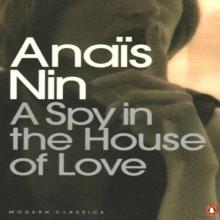 A Spy in the House of Love
A Spy in the House of Love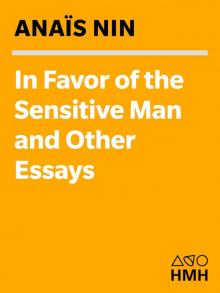 In Favor of the Sensitive Man and Other Essays (Original Harvest Book; Hb333)
In Favor of the Sensitive Man and Other Essays (Original Harvest Book; Hb333) Collages
Collages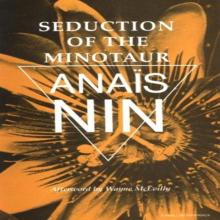 Seduction of the Minotaur
Seduction of the Minotaur Children of the Albatross
Children of the Albatross Delta of Venus
Delta of Venus The Four-Chambered Heart coti-3
The Four-Chambered Heart coti-3 Diary of Anais Nin, Volume 2
Diary of Anais Nin, Volume 2 Diary of Anais Nin, Volume 1
Diary of Anais Nin, Volume 1 Diary of Anais Nin, Volume 4
Diary of Anais Nin, Volume 4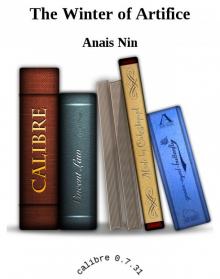 The Winter of Artifice
The Winter of Artifice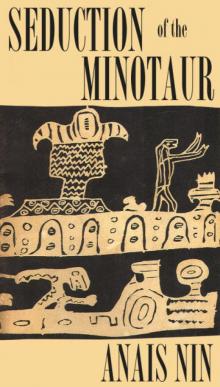 Seduction of the Minotaur coti-5
Seduction of the Minotaur coti-5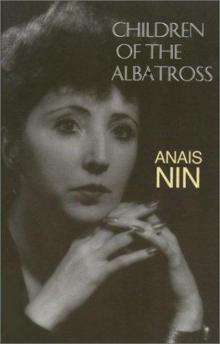 Children of the Albatross coti-2
Children of the Albatross coti-2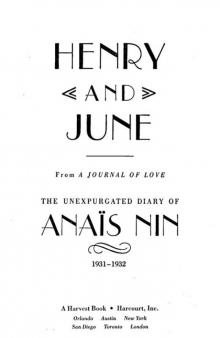 Henry and June: From A Journal of Love -The Unexpurgated Diary of Anaïs Nin (1931-1932)
Henry and June: From A Journal of Love -The Unexpurgated Diary of Anaïs Nin (1931-1932) Ladders to Fire
Ladders to Fire House of Incest
House of Incest